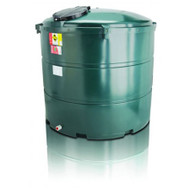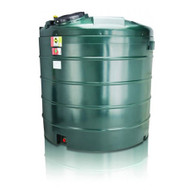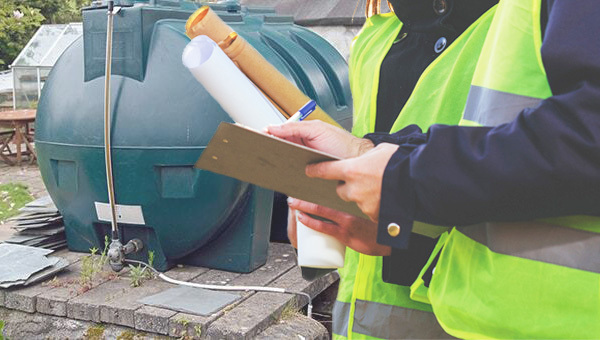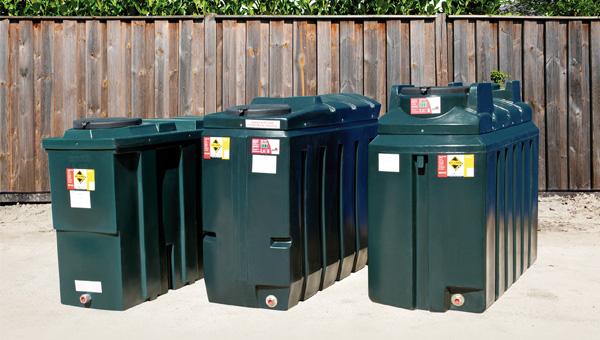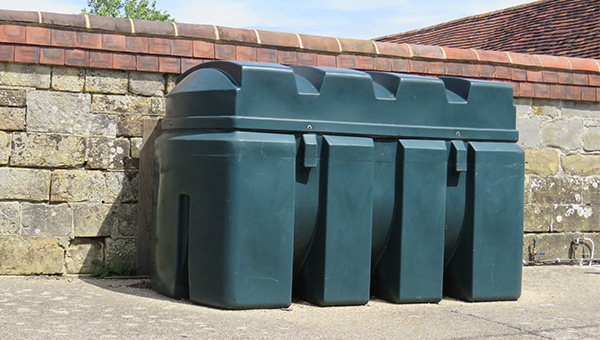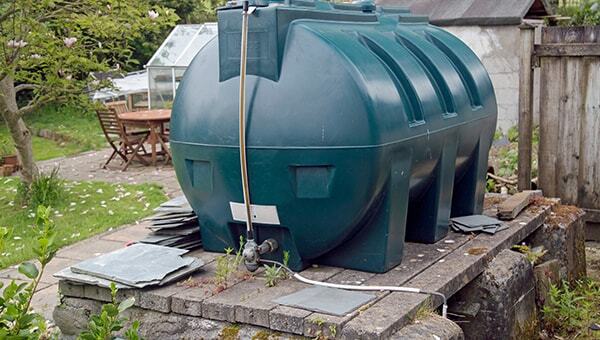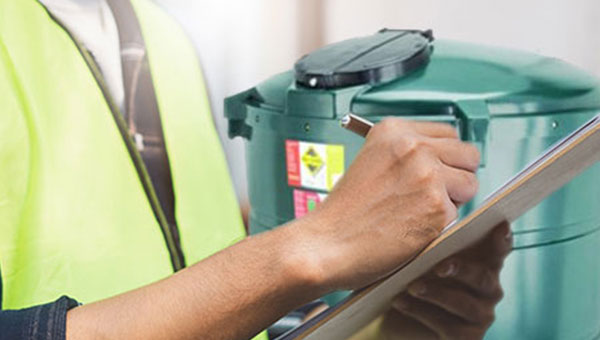
Storing oil for commercial purposes is regulated by a different set of rules than storing it for domestic or agricultural use. While the primary intention of all oil tank regulations is to protect the oil from the environment and the environment from the oil, the ways in which this is achieved differ enough across the three types of use to warrant further discussion.
In this article, we will take a closer look at the regulations for storing oil on commercial premises. If you would like to know more about the rules and regulations surrounding the storage of oil for your home or agricultural needs, check out our other article for Domestic Oil Storage Tank Regulations.
Before we get started, however, we should stress that the regulations being focused on here will primarily be those that apply to commercial oil storage in England & Wales. Advice across all areas of the UK is broadly similar, but there are important aspects that do differ. If you are installing or managing an oil storage tank on commercial premises in Scotland or Northern Ireland, please make sure that you research the relevant regulations for your area and follow them over any conflicting advice given in this article. The links above are a good place to start for more information about each country's oil storage regulations.
Disclaimer: The information in this article is provided for general guidance only. We would strongly recommend that you contact a local OFTEC registered technician or one registered with the Building Regulations Competent Person Scheme for further advice on installing and maintaining oil storage tanks.
Oil Storage Tank Regulations
Three different regulations in England regulate the storage of oil.
- Domestic Oil Storage is covered by Building Regulations.
- Commercial Oil Storage is covered by the Control of Pollution (Oil Storage) (England) Regulations 2001.
- Agricultural Oil Storage is covered by the Control of Pollution (Silage, Slurry and Agricultural Fuel Oil), 1991.
Oil tanks with a capacity of 3500 litres or less that are installed to store and supply heating oil to a private dwelling fall under domestic regulations. This is relatively straightforward. However, knowing when your tank will fall under commercial regulations can be a little less so. In an effort to cut through some of the confusion, though, we'll now take a look at the commercial regulations to see when exactly they become relevant.
Note: The information that follows is for above ground oil storage containers only. If you have or are interested in an underground oil storage tank, they are covered by the Defra Groundwater Protection Code instead.
Commercial oil storage regulations
If you are storing oil in a container with a capacity of 201 litres or more on commercial premises or storing more than 3,500 litres of oil at your home (this includes barges and houseboats), you must follow the oil storage regulations for business. This seems relatively straightforward, but there are two points that can be a bit ambiguous if not further explained; what is classed as commercial premises and to what type of oil containers does this refer?
Where can you store oil for commercial use?
Any property used for business purposes (including marinas) and public sector buildings, such as schools, hospitals, and leisure centres, are all classed as commercial premises under this regulation. Basically, if the oil you are storing isn't being used for domestic purposes (i.e. home heating) or agricultural purposes (i.e. fuelling tractors or powering grain dryers), it's going to be classed as commercial use.
These classifications may seem a bit pedantic, especially since the regulations for each are broadly similar. However, it is still important to ensure you are following the right set of rules for the safety of your property, the environment, and your own legal peace of mind. If you do not follow the relevant requirements for storing oil, you can be fined or prosecuted. The Environment Agency can also serve an anti-pollution works notice if your storage container isn't up to legal standards, forcing you to bring it up to code or even replace it if you want to avoid legal action. That brings us neatly onto point number two.
In what type of container can you store oil for commercial use?
According to the advice on the government's website, an oil storage container can be any of the following:
- Oil Drums.
- Fixed Oil Storage Tanks.
- Intermediate Bulk Containers (IBCs).
- Mobile Bowsers (containers for storing and dispensing oil that can be relocated but not under their own power).
Certain types of generators (ones with a connected oil supply tank that has a capacity of 201 litres or more) can also be classed as oil storage containers if they are:
- in daily use with a supply tank that has a capacity which isn't used up in one day.
- 'stand-by' generators kept for emergency use.
Again, it may seem obvious that all of the above would be classified as oil containers covered by the commercial regulations. However, some container types and storage situations are not covered, so it's worth knowing for sure. You do not need to follow the commercial rules if your storage containers are:
- underground (they are covered by the Defra Groundwater Protection Code instead).
- at a refinery or premises for onward distribution of oil (i.e. places that don't sell oil directly to end-users).
- stored inside a building – a permanent or temporary structure with walls and a roof that would capture oil leaking from the container.
There are a couple of caveats to these exemptions, however, and it is best to be aware of them in case they apply to you:
- Storing oil in a building - if your storage container is inside a building, there is a good chance you will need to meet additional fire safety measures as stated under Building Regulations. It's always worth checking this with your local council if you plan to store oil inside a building. Additionally, if the building in question is on a farm in England or Wales, you must also meet the requirements for storing agricultural fuel oil (see below for more on this).
- Storing oil at an airport – if an oil company owns an oil depot at an airport, it is considered to be "premises for onward distribution" and therefore not covered by commercial rules. However, if an airline owns the depot, it is considered to be a commercial storage application, and, therefore, the rules do apply.
- Storing oil at a marina – while Marina 'service boats' can be used to deliver oil, they are not considered "premises for onward distribution" if they sell oil directly to boat owners. In such cases, the commercial rules will still apply to service boats.
Okay, so that's where's and the how's of oil storage that falls under the commercial oil storage regulations, but there is one last question to ask before we can get on to what the regulations actually are.
What type of oil can you store for commercial use?
According to the government's website at the time of writing this article, you must follow the commercial rules if you store any of the following types of oil on commercial premises:
- Petrol.
- Diesel.
- Biofuels.
- Kerosene.
- Vegetable oils (including any oil derived from a plant, such as sunflower oil or plant-based oils used in aromatherapy).
- Synthetic oils (usually lubricating oils, e.g. motor oil).
- Oils used as solvents.
- Biodegradable oils (typically lubricating or hydraulic oils).
- Liquid bitumen-based products (e.g. waterproofing/damp proofing products or coatings for a road surface).
- Cutting fluids (e.g. lubricants designed specifically for metalworking processes that are made from or contain oil as oil-water emulsions).
- Insulating oils (typically used as electrical insulators and coolants).
- Waste oil (see below).
Grease is also on the government's list but is somewhat set apart by the following information:
Grease is a mixture of oil and other substances, usually soap, and is viscous unless heated. We may ask for grease to be stored on a drip tray, but we expect that containers are either below 200 litres or stored indoors.
As with the first two points, there are specific exemptions to the rules listed that are worth noting. You do not need to follow the commercial rules if you store any of the following substances:
- Liquid Petroleum Gas (LPG).
- Hydrocarbon products (those that are solid unless they are heated, e.g. bitumen).
- Solvents that are not oil-based (e.g. trichloroethylene).
- Aromatic hydrocarbons (e.g. benzene and toluene).
- Waste oil (see below).
These substances are either not classed as oil or are impractical to provide secondary containment for. However, they may still fall under other storage regulations or safety measures, so it is worth doing further research if you plan to store any of them.
You may have noticed that "waste oil" is listed in both the covered and exempt lists. This is because "waste oil" is a catch-all term that needs to be broken down into the various types to better explain.
Waste oils covered by the commercial oil storage regulations include:
- Waste vegetable oil.
- Waste cooking oil.
- Waste synthetic oil.
Waste oils exempt from the commercial oil storage regulations include:
- Mixtures of diesel and petrol which can no longer be used as vehicle fuel (e.g. fuel drained from a diesel car that's been accidentally filled with petrol).
- Any other oil drained from vehicle engines.
- Gearbox oil.
- Oil for turbines and hydraulic oil.
Note: while you do not need to follow the commercial rules if you store any of these types of waste oil, you should still check to see if you need an environmental permit.
Okay, that's the complicated bit of out the way, drilling down the where, how, and what's of commercial oil storage. Now we just need to take a look at what the actual rules are for storing commercial use oil.
Control of Pollution (Oil Storage) (England) Regulations 2001 for Commercial Oil Storage
Trying to trawl through any official documentation regarding governmental rules and regulations can be a chore. Fortunately, we've gone and done most of the leg work for you. In the sections below, you will find a copy of the official requirements (taken from the legislation.gov website), which you can review if you want the plain facts, followed by our take on the most important points explained in layman's terms.
Requirements for commercial oil storage — General (Official)
1) Oil shall be stored in a container which is of sufficient strength and structural integrity to ensure that it is unlikely to burst or leak in its ordinary use.
2) The container must be situated within a secondary containment system which satisfies the following requirements—
(a) subject to paragraph (5), it must have a capacity of not less than 110% of the container's storage capacity or, if there is more than one container within the system, of not less than 110% of the largest container's storage capacity or 25% of their aggregate storage capacity, whichever is the greater;
(b) it must be positioned, or other steps must be taken, so as to minimise any risk of damage by impact so far as is reasonably practicable;
(c) its base and walls must be impermeable to water and oil;
(d) its base and walls must not be penetrated by any valve, pipe or other opening which is used for draining the system; and
(e) if any fill pipe, or draw off pipe, penetrates its base or any of its walls, the junction of the pipe with the base or walls must be adequately sealed to prevent oil escaping from the system.
3) Any valve, filter, sight gauge, vent pipe or other equipment ancillary to the container (other than a fill pipe or draw off pipe or, if the oil has a flashpoint of less than 32°C, a pump) must be situated within the secondary containment system.
4) Where a fill pipe is not within the secondary containment system, a drip tray must be used to catch any oil spilled when the container is being filled with oil.
5) Where any drum is used for the storage of oil in conjunction with a drip tray as the secondary containment system, it is sufficient if the tray has a capacity of not less than 25% of—
(a) the drum's storage capacity; or
(b) if there is more than one drum used at the same time with the tray, the aggregate storage capacity of the drums.
Requirements for commercial oil storage — General (Explained)
The long and short of these general regulations is that your oil storage container needs to be:
- installed in the right place to avoid damage while also allowing for safe filling and maintenance access,
- be strong enough to withstand ordinary use,
- have a secondary containment feature to reduce the risk of leaking oil into the environment.
Where should you place an oil storage container on commercial property?
The positioning of your container is all about safety. Ideally, you want to locate it away from driveways, tanker turning circles, forklift truck routes, and any other areas where there is an increased risk of it being damaged by impact. That being said, however, you also need your container to be as close as possible to wherever the oil is needed in order to avoid overly long pipelines that pose a greater failure risk. If a low-risk location isn't available or practical, one solution to this is to place barriers or bollards around the storage container to give it some protection.
On top of that, you also need to think about how the tank will be filled. Do you have space to locate it somewhere accessible to a re-fill tanker, or will you need to install a remote filling point?
Important Note: if you do use a remote fill (i.e. an access point to a fill pipe that is outside the protection provided by the container's secondary containment feature), you MUST ensure there is a drip tray installed to catch any oil spilled during the delivery.
Ultimately, since no two sites are going to have the exact same layout and space available, there isn't really a "goldilocks" spot we can advise you of in this article. It will have to come down to good old fashioned common sense and/or advice from a professional installer. Given that all oil tanks should always be installed by a registered professional technician (preferably OFTEC approved), we'd probably get them to advise you on the best location anyway.
One of the vital things to keep in mind is that your container should be at least:
- 10 metres away from any inland freshwaters or coastal waters.
- 50 metres away from a well or borehole.
Safe from damage - Accessible - Away from any water sources = a good location.
How to ensure your oil storage container is suitable for use on a commercial property?
Oil storage containers must meet certain standards in order to be considered legal under the Control of Pollution (Oil Storage) (England) Regulations 2001 for Commercial Oil Storage.
For fixed tanks, they need to be made to British Standard 5410 or;
- Oil Firing Technical Association (OFTEC) standard OST T100 - for plastic containers.
- OFTEC standard OFS T200 or British Standard 799-5 - for metal containers.
For oil drums and IBC's, look out for ones marked with the letters' UN' for United Nations. Any that are will meet the required design standards.
But what do you do if you have a container that doesn't meet these standards? The best thing you can do is contact the Environment Agency to discuss whether the container you have is strong enough and in good enough condition to still be used.
What type of secondary containment is required for an oil storage container on commercial property?
All oil containers on commercial properties MUST be installed with a secondary containment feature around them to catch any potential oil leaks. But what exactly classifies as "secondary containment"?
Secondary containment for commercial oil containers usually comes in the form of either a drip tray placed beneath it or a sealed outer case around it - also known as a bund.
Oil Storage Drip Trays
Drip trays are fairly self explanatory and best used for catching spills and leaks beneath smaller containers (such as drums) and remote filling points. The most important thing to remember if you plan to use a drip tray as secondary containment for oil drums is that it MUST have a capacity equal to or greater than ¼ of the total combined capacity of any oil drums it is holding.
e.g. if you have four 205 litre oil drums sitting on a drip tray, that drip tray needs to have a capacity of 205 litres in order to qualify as a suitable secondary containment for them.
Bunds, on the other hand, can be a bit tricky to classify.
Oil Storage Bunds
A bund can be the outer shell of a tank manufactured as part of the tank system (known as "integrally bunded" tanks), or it can be a structure made out of masonry or concrete within which the oil container is stored.
Either way, an oil storage bund must always have the following characteristics:
Key requirements of an oil storage bund
- Must have a storage capacity that is at least 110% that of the oil container it is to surround.
- Must be impermeable to oil and water.
- Must not have any pipe, valve, or other opening in the base or walls of the bund that allow it to be drained.1
- Must contain every part of the oil storage container and associated equipment (such as valves).2
1 - any fill pipe or draw-off pipe that does pass through the bund base or wall must be sealed to stop oil leaking out.
2 - if the substance being stored has a flash point of less than 32 degrees Celsius (such as ethanol), the container's filters, valves, gauges etc., can be located outside the bund.
Important Note: If you plan to build a bund from masonry or concrete, be aware that it will probably need a rendering or special coating on the internal surfaces to make the base and walls impermeable. If you are buying an oil tank, be aware that being "double-skinned" or "twin-walled" is not necessarily the same as being bunded. An outer skin designed to give the tank extra strength can only be classed as a bund if there is enough space between it and the inner tank to hold 110% of the inner tank's storage capacity.
Secondary containment for multiple oil storage containers
If you have multiple fixed tanks, mobile bowsers, or IBCs, the secondary containment around them must have a capacity that is equal to ¼ of the combined total of all containers or 110% of the largest container, whichever measurement is greater.
The caveat to this comes if the containers are hydraulically linked, in which case they should be treated as a single unit, and the secondary containment should have a capacity that is 110% of the combined capacity. If they are hydraulically linked but have separate secondary containment, however, each bund or drip tray still needs to have a capacity that is at least 110% of the combined capacity of all containers. If the drip trays or bunds are also hydraulically linked, though, you can count their combined capacity.
And that's it for the general rules for storing oil on a commercial property. By adhering to them when installing your containers, you should be able to safely store oil for business use. Though not mentioned in the commercial regulations specifically, it is also worth giving some thought to fire safety and anti-theft measures when considering your installation location, i.e. don't install an oil container where sparks fly, open flames burn, or temperatures get really high, and try to keep them hidden from the prying eyes of unscrupulous passers-by.
Before you go running off to install your new oil container, however, there are a few extra rules you'll need to follow if you plan to use fixed tanks or mobile bowsers to store your oil.
Requirements for commercial oil storage — Fixed Tanks (Official)
1) Any fixed tank used for storing oil shall satisfy the following requirements.
2) Any sight gauge must be properly supported and fitted with a valve which must be closed automatically when not in use.
3) Any fill pipe, draw off pipe or overflow pipe must be positioned, or other steps must be taken, so as to minimise any risk of damage by impact so far as is reasonably practicable and—
(a) if above ground, must be properly supported;
(b) if underground—
i. must have no mechanical joints, except at a place which is accessible for inspection by removing a hatch or cover;
ii. must be adequately protected from physical damage;
iii. must have adequate facilities for detecting any leaks;
iv. if fitted with a leakage detection device which is used continuously to monitor for leaks, the detection device must be maintained in working order and tested at appropriate intervals to ensure that it works properly; and
v. if not fitted with such a device, must be tested for leaks before it is first used and further tests for leaks must be performed, in the case of pipes which have mechanical joints, at least once in every 5 years and, in other cases, at least once in every 10 years; and
(c) if made of materials which are liable to corrosion, must be adequately protected against corrosion.
4) The tank must be fitted with an automatic overfill prevention device if the filling operation is controlled from a place where it is not reasonably practicable to observe the tank and any vent pipe.
5) Any screw fitting or other fixed coupling which is fitted and is in good condition must be used when the tank is being filled with oil.
6) Where oil from the tank is delivered through a flexible pipe which is permanently attached to the container—
(a) the pipe must be fitted with a tap or valve at the delivery end which closes automatically when not in use;
(b) the tap or valve must not be capable of being fixed in the open position unless the pipe is fitted with an automatic shut off device;
(c) the pipe must be enclosed in a secure cabinet which is locked shut when not in use and is equipped with a drip tray or the pipe must—
i. have a lockable valve where it leaves the container which is locked shut when not in use; and
ii. be kept within the secondary containment system when not in use.
7) Where oil from the tank is delivered through a flexible pipe which is permanently attached to the container—
(a) fitted with a non-return valve in its feed line;
(b) positioned, or other steps must be taken, so as to minimise any risk of damage by impact so far as is reasonably practicable; and
(c) protected from unauthorised use.
8) Any permanent vent pipe, tap or valve through which oil can be discharged from the tank to the open must satisfy the following requirements—
(a) it must be situated within the secondary containment system;
(b) it must be arranged so as to discharge the oil vertically downwards and be contained within the system; and
(c) in the case of a tap or valve, it must be fitted with a lock and locked shut when not in use.
Requirements for commercial oil storage — Fixed Tanks (Explained)
First off, one point that isn't specifically mentioned in the requirements above is that fixed tanks MUST be bunded. You cannot use a drip tray as secondary containment for an oil storage tank.
With that out of the way, the rest of these extra requirements are mostly common sense. They do warrant careful consideration to ensure your tank is compliant, but here are the highlights as a quick overview:
- Anything that is external to the bund but still part of the tank system (valves, pumps, piping etc.) must be positioned/protected in such a way as to minimise the risk of damage and or leaks.
- Use brackets to support any above ground fill pipes, draw-off pipes, and overflow pipes to the nearest wall.
- Keep the delivery pipe in a locked cabinet to prevent misuse.
- Make sure sight gauges, delivery pipes, and pumps all have the appropriate valves to keep the oil secure when not in use.
- Install an automatic overfill prevention device to the tank if using a remote filling system.
- Any underground pipework should be suitably protected from vibration damage, accidental digging damage, and corrosion (if metal pipes are used).
- Underground pipes should also have a permanent leak detection device installed, otherwise it will need to be tested every 5 (if it contains mechanical joints) to 10 (if it doesn't contain mechanical joints) years.
Requirements for storage of oil — Mobile Bowsers (Official)
1) Any mobile bowser used for storing oil shall satisfy the following requirements.
2) Any tap or valve permanently fixed to the unit through which oil can be discharged to the open must be fitted with a lock and locked shut when not in use.
3) Where oil is delivered through a flexible pipe which is permanently attached to the unit—
(a) the pipe must be fitted with a manually operated pump or with a valve at the delivery end which closes automatically when not in use;
(b) the pump or valve must be provided with a lock and locked shut when not in use;
(c) the pipe must be fitted with a lockable valve at the end where it leaves the container and must be locked shut when not in use.
Requirements for storage of oil — Mobile Bowsers (Explained)
Again, these extra rules are fairly common sense. They are just there to reinforce the need to ensure every possible step is taken to prevent a major leak outside of the secondary containment. The main point is to have the appropriate locks on valves, pipes, and pumps to ensure the oil can't flow when not in use.
And there we have it, everything you need to know about storing oil on a commercial property. We hope this has been an informative article but, if you want to know more about oil storage and how to chose the right tank, please check out our “Basic Guide to Oil Storage Tanks” and “What Type of Tank Do You Need?” articles. If you are in the market for high-quality polyethylene oil tanks, we stock a great range of bunded tanks over in our Oil Storage Tanks section that we'd recommend taking a look at.
If you have any further questions about oil tank regulations, or need any further advice about oil storage options, contact JDP today. Our team of experts are always on hand to help with all of your civils and drainage needs.


